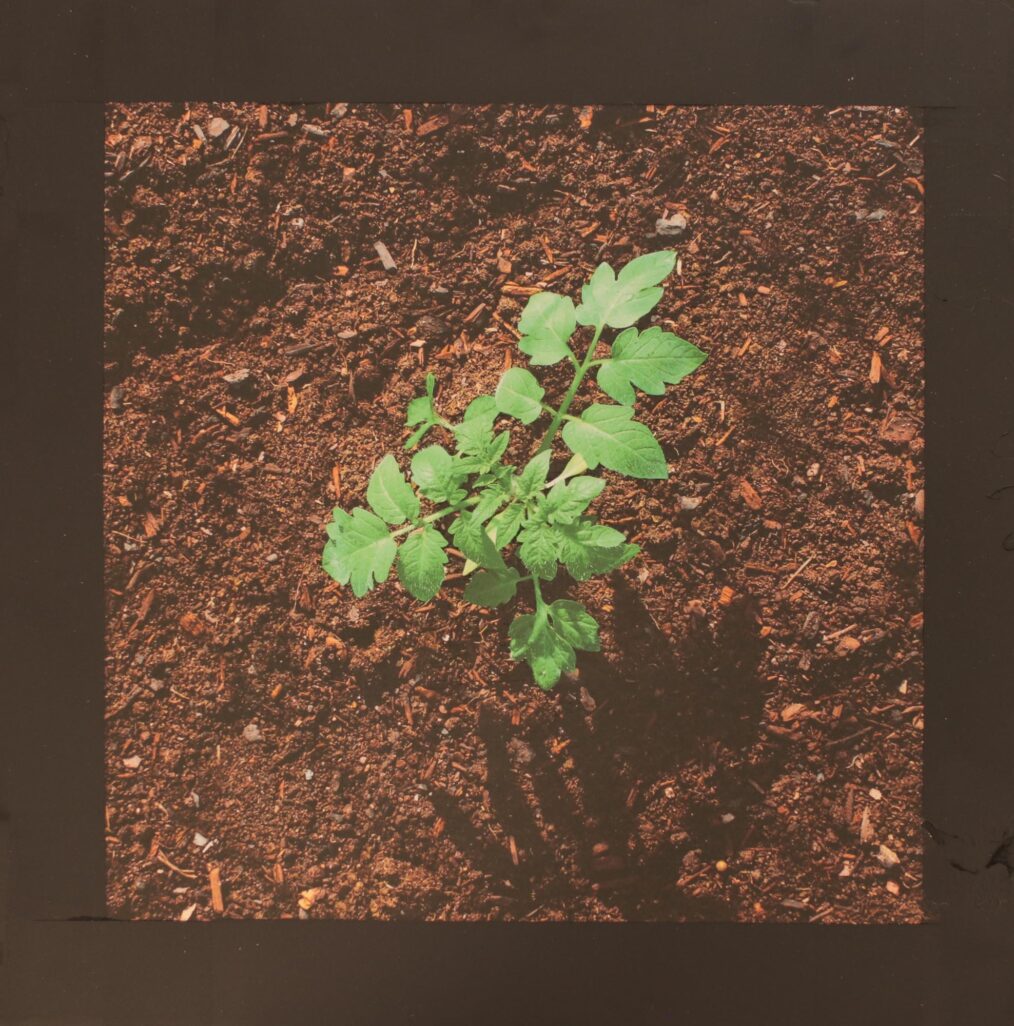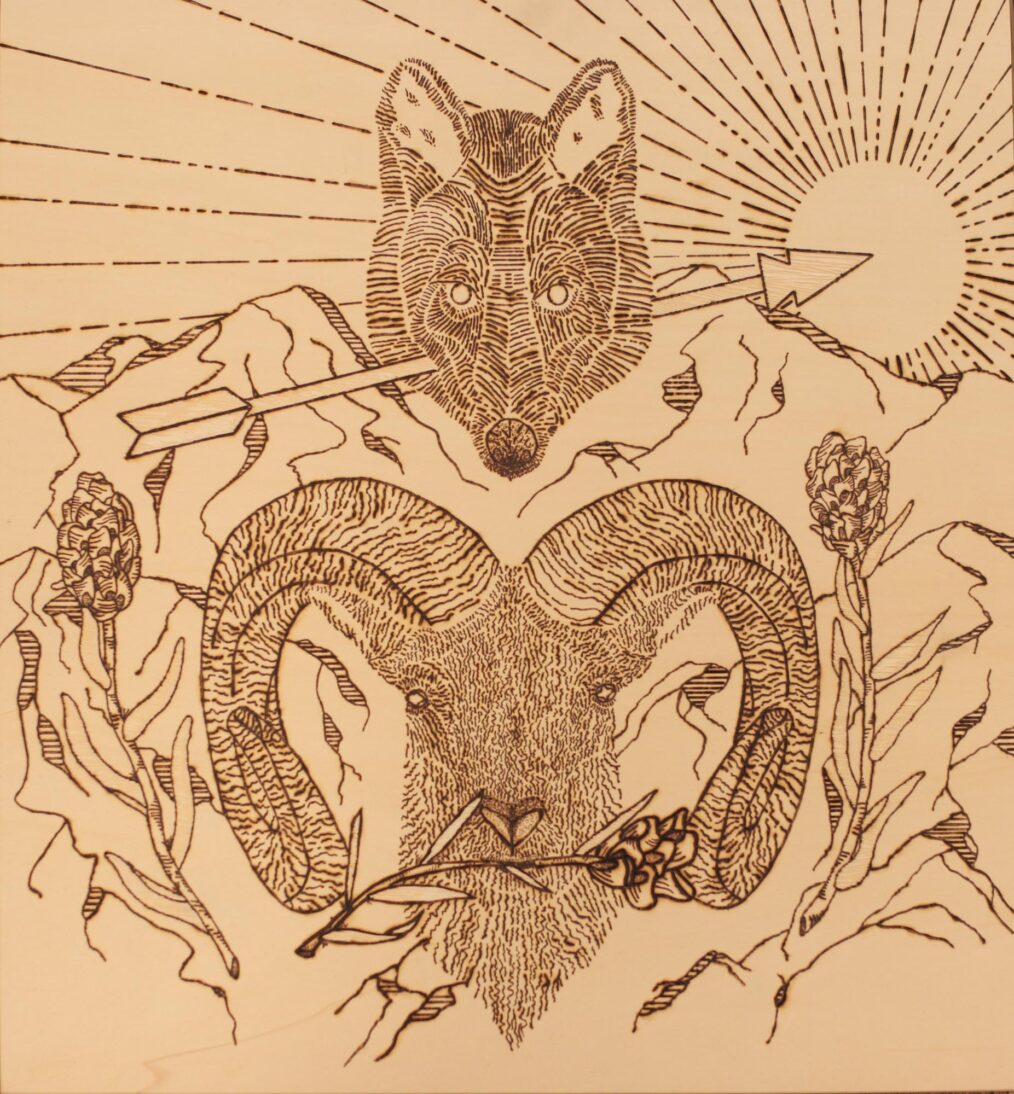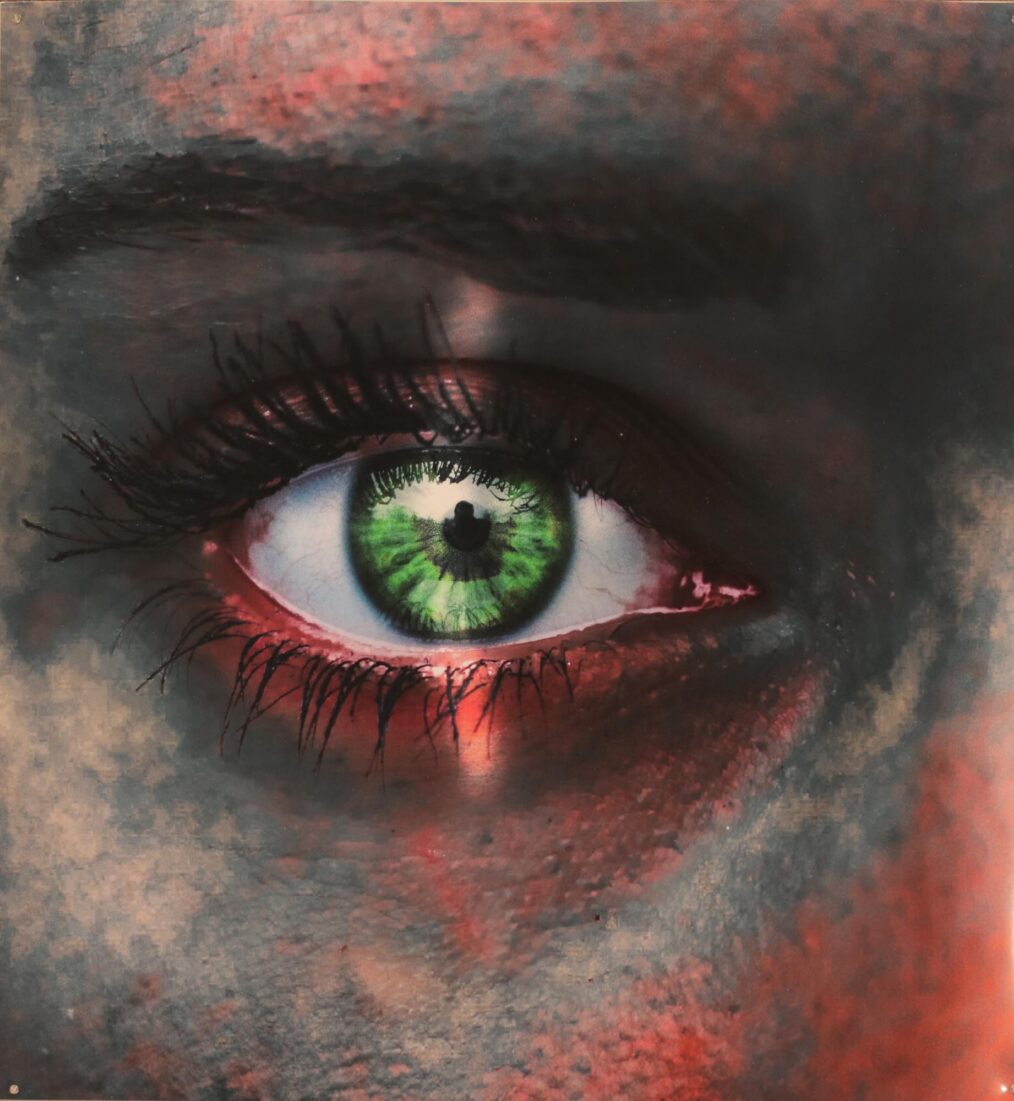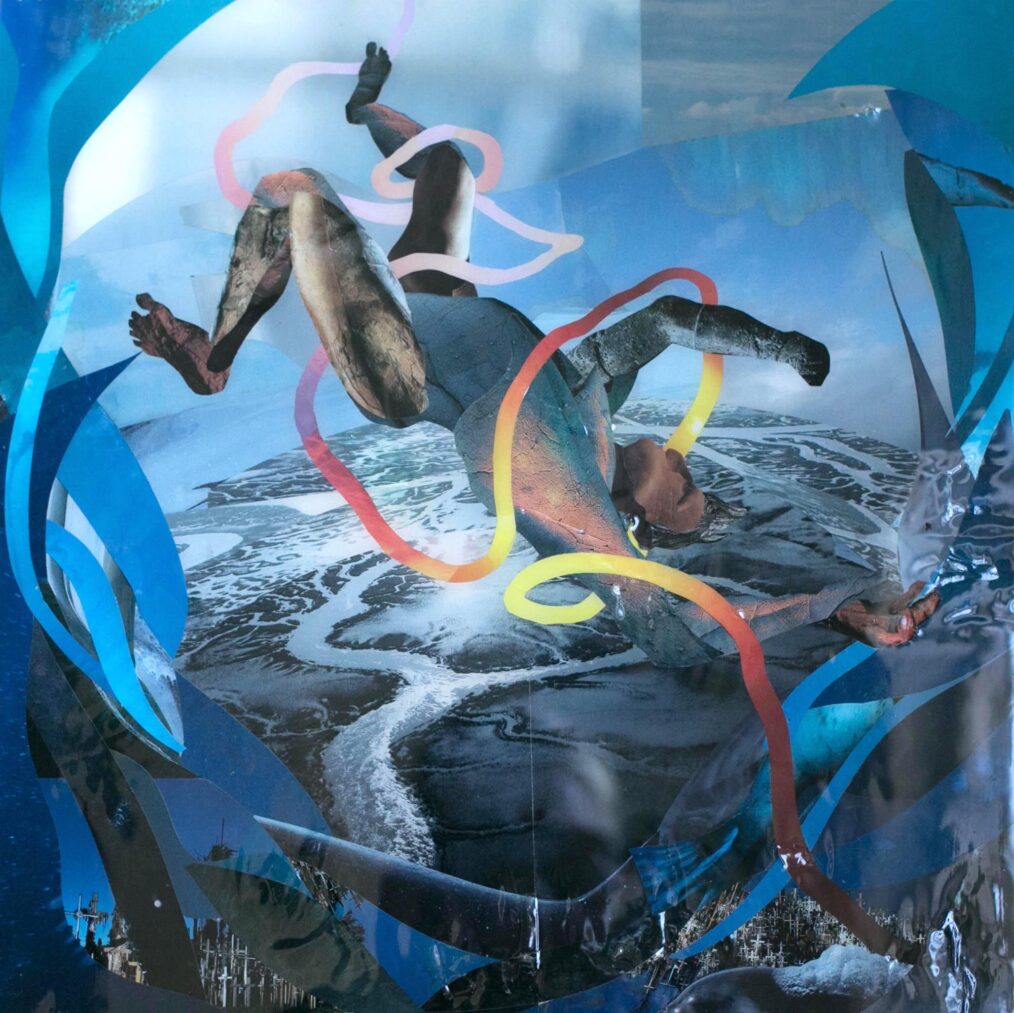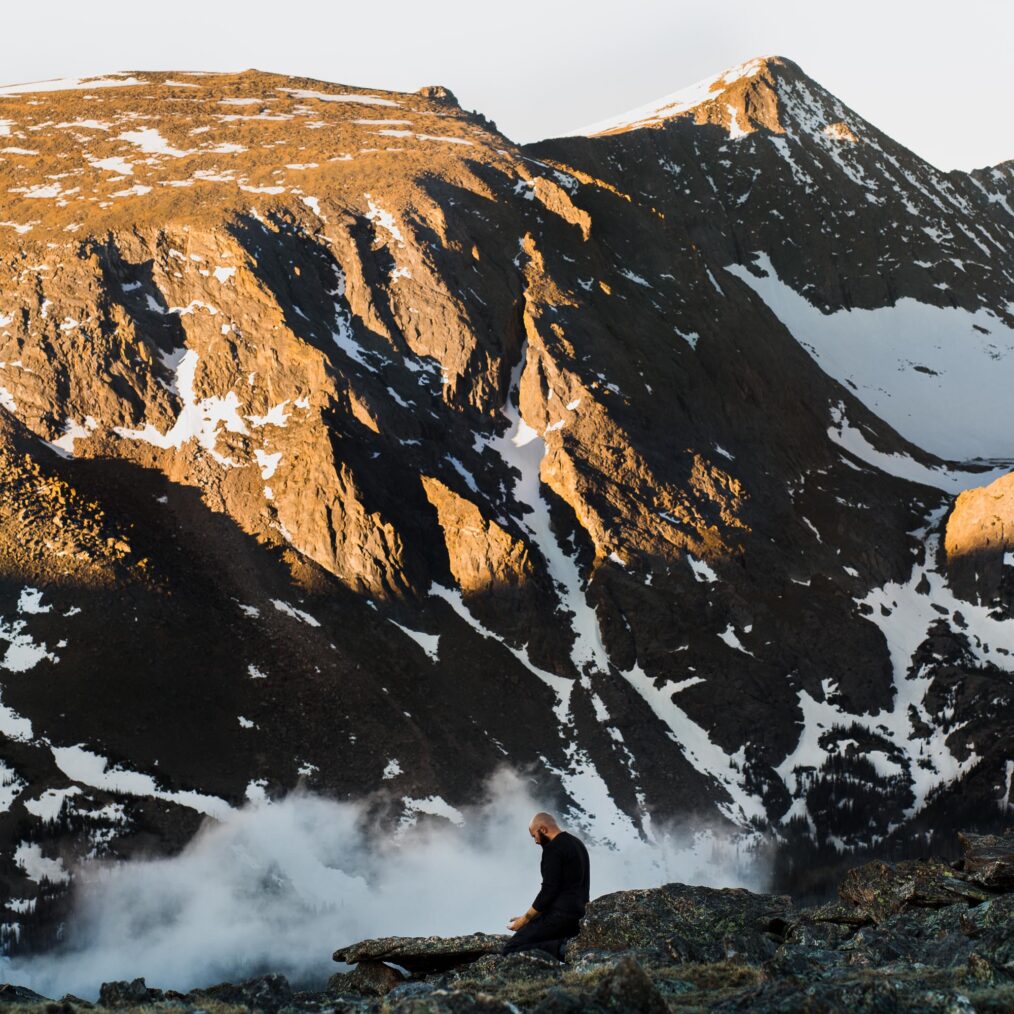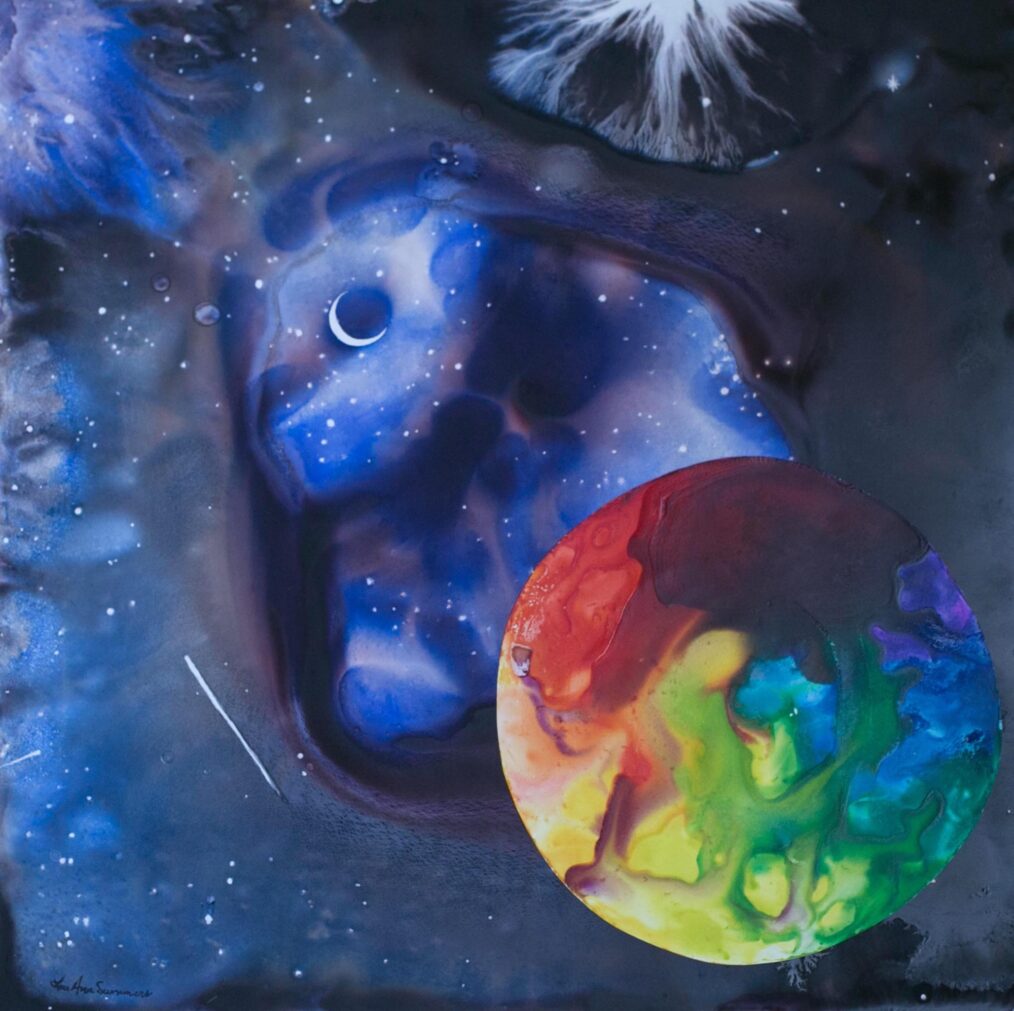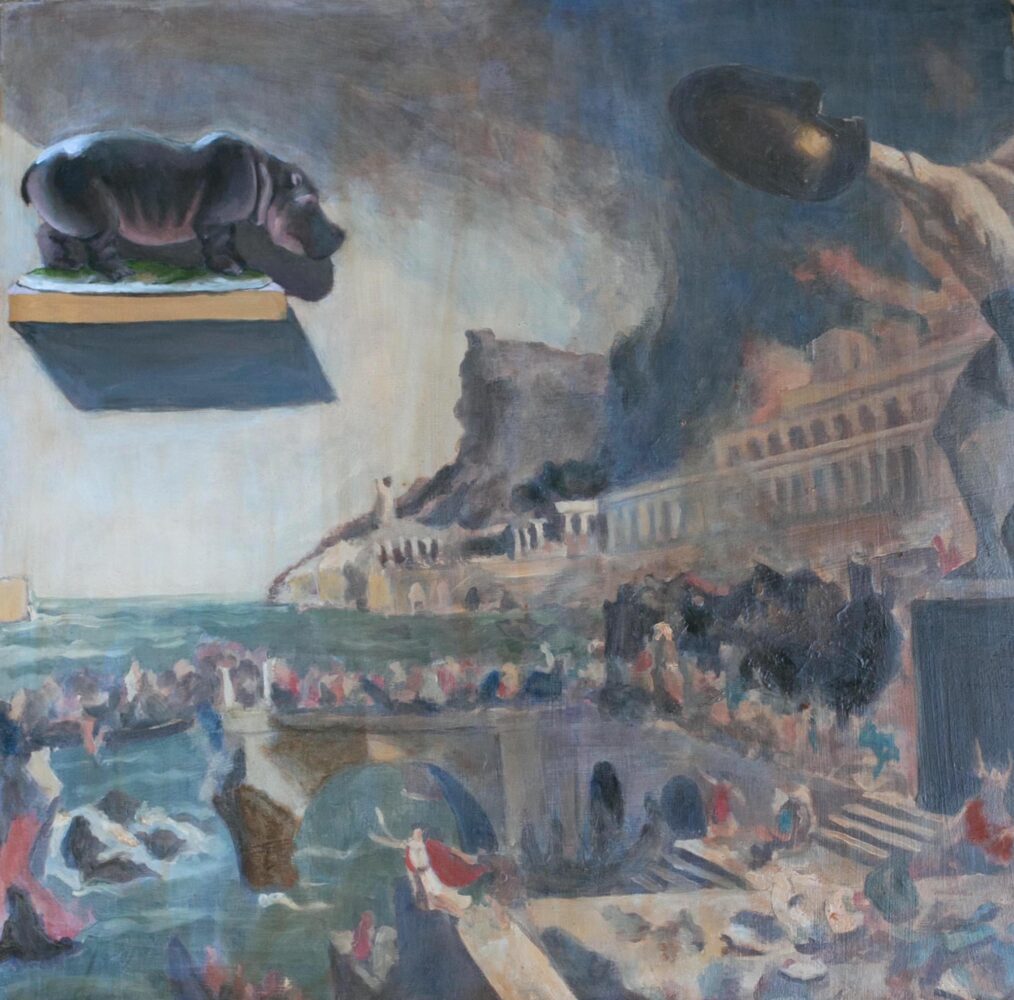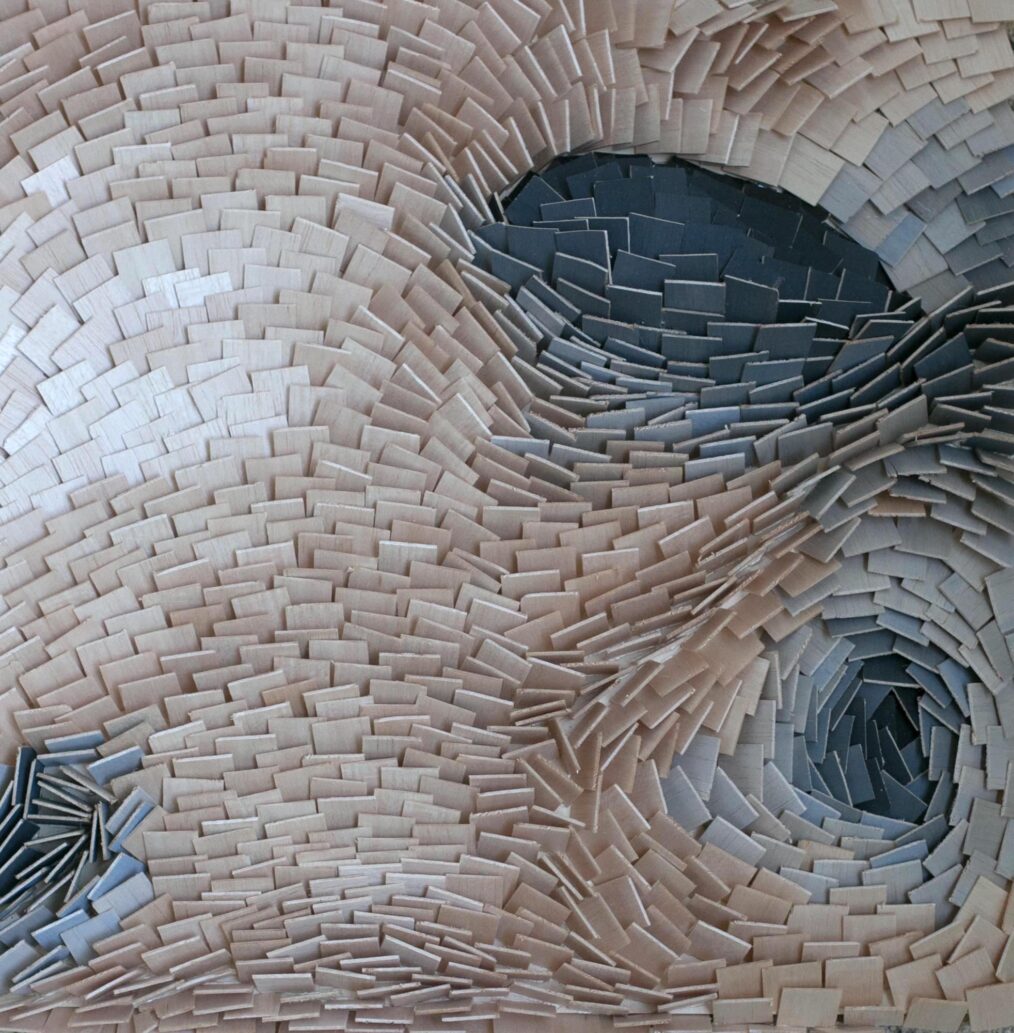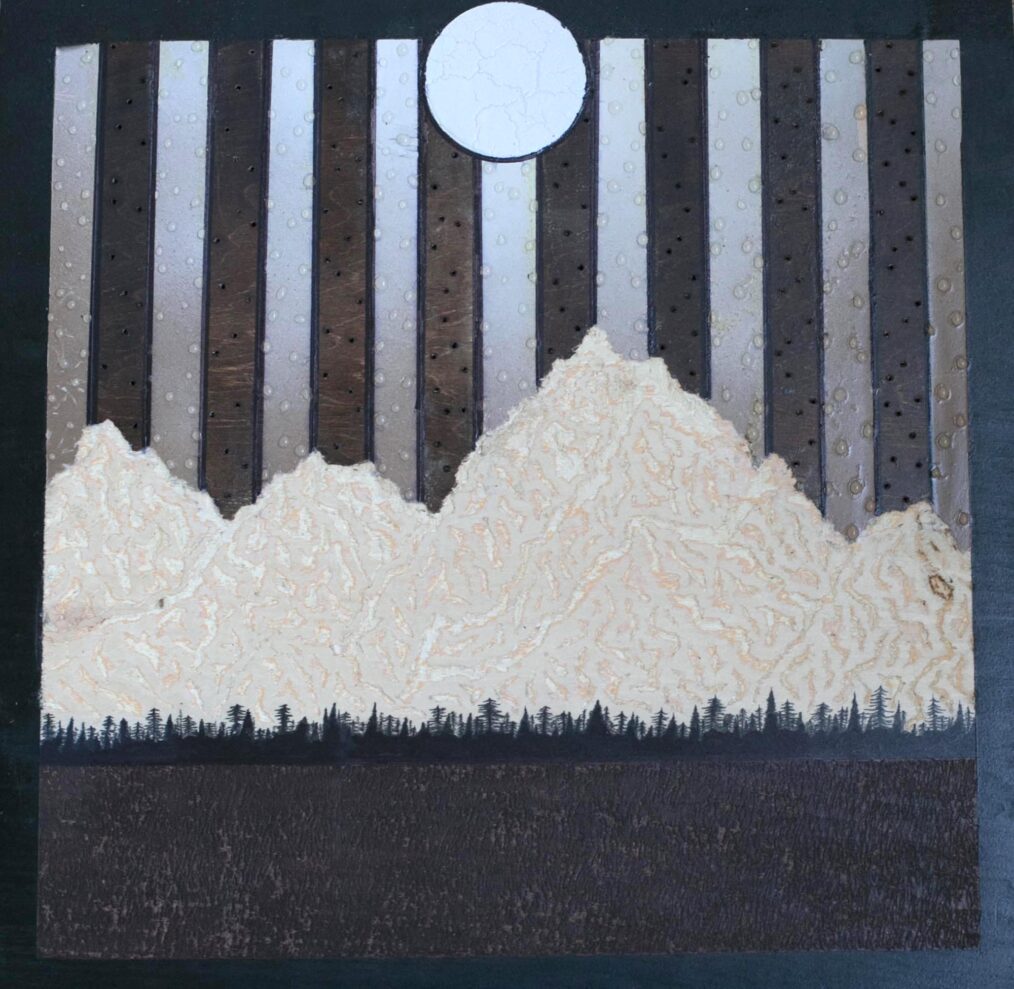Learn more about Christ in the Psalms artwork and download artwork guides here.
Person: Whitney Ballinger
Hi, I’m Whitney Ballinger! I recently got my master’s in Clinical Mental Health Counseling at Denver Seminary. For as long as I can remember, art has played a significant role in my life. Through the mediums of watercolor, photography, ceramics, and acrylics, I have learned to creatively express how I see/experience the world and God.
Piece
Acrylic painting.
PROCESS
As I prayed over Psalm 81, a strong theme I noticed was pride, as God calls the Israelites to turn from their idols and stubborn desires but they do not listen (11–12). He also calls them to look back and remember His faithfulness in bringing them out of Egypt (5,10). My main takeaway from praying over this passage was the picture of God calling His people to trust Him with their needs (remembering His faithfulness to deliver them in the past) and to surrender their idols—specifically the idol of following their own stubborn hearts (12).
This piece depicts the blindness of heart that occurs when God’s faithfulness is ignored. The little girl watering a dying plant reflects Israel trying to bring life apart from God. The umbrella seems safe and necessary to the girl as it is raining (reflecting her own stubborn desire to stay dry and comfortable), but ironically it is protecting the plant from exactly what it most desperately needs… life-giving water already pouring from the sky. The broken watering can more specifically represents an idol (9)—something that is supposed to bring water or life, but is broken and unable to do so.
The rain represents God’s provision and faithfulness, and that if we would open our mouths (put down our umbrellas) he would fill it (10).
Finally, the little girl is intentionally small in comparison to the rest of the painting. Ironically, if she would just gaze behind her, she would be confronted with a stark reminder of God’s faithfulness to grow a whole forest of trees…apart from her umbrella or watering can. Not only the forest, but the grass, wildflowers, and sky dance and sing praises to their creator (1–2) and are vibrant reflections of life in Him; calling the little girl to listen to God, remember His faithfulness, put down her idols, and dance in the rain of God’s faithfulness.

